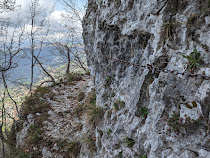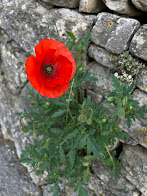

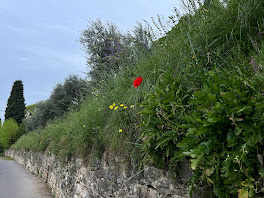
Poppies (Papaver rhoeas) in Bergamo, Italy - growing on walls.
“Walls, huh, yeah
What are they good for?
Growing everything!”
Sung to the tune of “War”, an anthem made famous by Edwin Star in 1970. Poppies (papaveri in Italian) - scientifically known as Papaver rhoeas – are a plant you find often growing in and on walls around Bergamo, Italy. In the last week, we’ve resumed our jogs along Via Torni and Via G. Marieni. We stopped to snap some photos because the poppies were so beautiful, and we needed a break.
The walls along the streets via Torni and via G Marieni – on the “backside” of Città Alta of Bergamo – are a good place to find many of the tag: wall plants we’ve covered in past posts. These streets (really think "country lane") remind us a lot of our time in 2007 – 2008 when we lived in Florence and went for walks in the low hills just south of the city, in Arcetri. In those hills, we would often walk by Villa Galileo - Part of an estate called "Il Gioiello" - where Galileo spent the last part of his life under house arrest.
Other than facile evocation of the "War" song because it popped (no pun intended) into our heads (both Wall and War with one syllable starting with W), poppies do relate thematically in that they have become a symbol of remembrance and honor of those that have died in war.


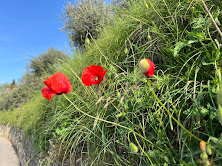
“Walls, huh, yeah
What are they good for?
Growing everything!”
Sung to the tune of “War”, an anthem made famous by Edwin Star in 1970. Poppies (papaveri in Italian) - scientifically known as Papaver rhoeas – are a plant you find often growing in and on walls around Bergamo, Italy. In the last week, we’ve resumed our jogs along Via Torni and Via G. Marieni. We stopped to snap some photos because the poppies were so beautiful, and we needed a break.
The walls along the streets via Torni and via G Marieni – on the “backside” of Città Alta of Bergamo – are a good place to find many of the tag: wall plants we’ve covered in past posts. These streets (really think "country lane") remind us a lot of our time in 2007 – 2008 when we lived in Florence and went for walks in the low hills just south of the city, in Arcetri. In those hills, we would often walk by Villa Galileo - Part of an estate called "Il Gioiello" - where Galileo spent the last part of his life under house arrest.
Other than facile evocation of the "War" song because it popped (no pun intended) into our heads (both Wall and War with one syllable starting with W), poppies do relate thematically in that they have become a symbol of remembrance and honor of those that have died in war.



Poppies (Papaver rhoeas) in Bergamo, Italy - growing on walls along Via Torni and Via G. Marieni.

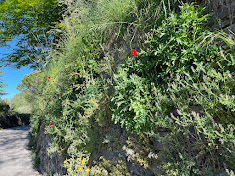
Via Marieni (left) and Via Torni (right) in Bergamo, Italy - a nice country lane for a walk or run.


Via Marieni (left) and Via Torni (right) in Bergamo, Italy - a nice country lane for a walk or run.
A list of our wall plants we've seen in Bergamo thus far:
- [Papavero] Papaver rhoeas - Common poppy
- [Campanulaceae] Campanula poscharskyana (post) – Serbian Bellflower
- [Plantaginaceae] Antirrhinum majus (post) - Common Snapdragon
- [Crassulaceae[ Sedum palmeri (post)
- [Crassulaceae] Sedum album and Sedum dasyphyllum (post) - White Stonecrop and Corsican Stonecrop
- [Papavero] Fumaria officinalis (post) – Earth Smoke
- [Brassicaceae] Aubrieta deltoidea - Purple Rock Cress and Iberis sempervirens - Evergreen Candytuft (post)
- [Geraniaceae] Geranium robertianum (post) - Stinking Bob
- [Asteraceae] Erigeron karvinskianus (post) - Mexican Fleabane
- [Aspleniaceae] Asplenium ceterach (post) - Rustyback Fern
- [Aspleniaceae] Asplenium ruta-muraria (post) - Wall Rue
- [Aspleniaceae] Asplenium trichomanes (post) - Maidenhair spleenwort
- [Urticaceae] Parietaria diffusa (post) – Pellitory
- [Plantaginaceae] Cymbalaria muralis (post) - Pennywort

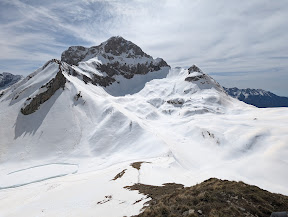








%20for%20the%20hike.png)
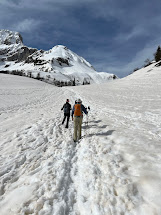


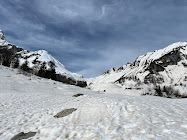





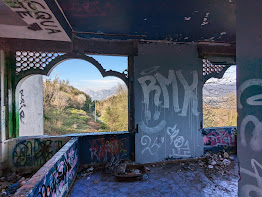
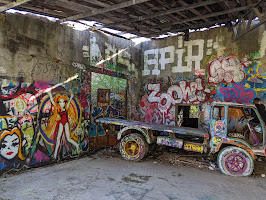
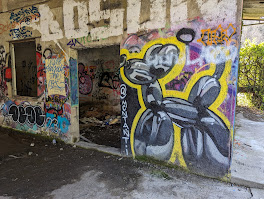



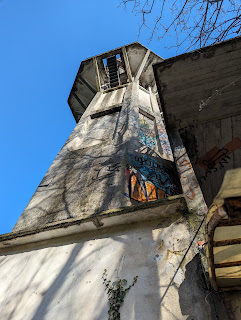








%20twoard%20Vall%20Cavallina.JPG)
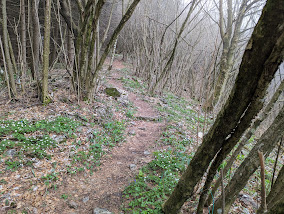
![[Amaryllidaceae] Galanthus nivalis [Amaryllidaceae] Galanthus nivalis](https://blogger.googleusercontent.com/img/b/R29vZ2xl/AVvXsEj9lYOQpMWxY5QqXGBih0jXOJJznwgUFG9C3IUmiq8t3fKUSODrARUPxVKEy2XWQad1pUzskyT5tnyj1FOzKeQpdAn-N9B9tfvXtqIiNPfAoKjxBU3I9173slKakgLhJjPQp8XOgGptCX6_RFX7A_P9m16UhSSIx_qHJQlUIAHZ6EwQra0OwkXZyQ49DA/w200-h151/%5BAmaryllidaceae%5D%20Galanthus%20nivalis.jpg)
![[Asparagaceae] Scilla bifolia [Asparagaceae] Scilla bifolia](https://blogger.googleusercontent.com/img/b/R29vZ2xl/AVvXsEiJjoQ-PBgDhm_qyFKQqm3xx2AyJDLHEH9sVkOe9DmsasSCm9k9_KeyOt4WsORY_qBeixL-gYxK6pOyGzLWdQoyP8D9IImcpdCCVLRTel6wt8VlCSY2WduJsa1qB5bwtazkUVTPmxCBWCwsnNSuyVE-gU0I0nn2Zb6WA8BZmY48fu0-P0zsYTQCERH1bw/w200-h150/%5BAsparagaceae%5D%20Scilla%20bifolia.JPG)
![[Boraginaceae] Pulmonaria angustifolia [Boraginaceae] Pulmonaria angustifolia](https://blogger.googleusercontent.com/img/b/R29vZ2xl/AVvXsEhJgvNqPlPD_lM0BdMiLKBBar1kt2vqGs1z4Sn5RCD8dN1Ot6HniYyxAcHdfvKSFJw_N3MoBbvXEiFxAVbpD2OhYiBr6F3YDLCQPHzLq5Wx0yjTGlWu0y72Nz__Dcp4Nr29MCWq7v98QL_Kv0c4zs2drN2ANOtxeASyRZIfRaDHBRsoWzU57ZF_S7ZbYw/w150-h200/%5BBoraginaceae%5D%20Pulmonaria%20angustifolia.JPG)
![[Brassicaceae] Cardamine heptaphylla [Brassicaceae] Cardamine heptaphylla](https://blogger.googleusercontent.com/img/b/R29vZ2xl/AVvXsEj-Ql90CrXnIIc83MGpfCmCcZnzat2LdoIRH1NB3vorZ4a4jsBmDqUgpNc-Ms8Cw8dkSXEwzQLgqqZhAAR5Wn1VL2oPxR-S6N6QuLKQtx_oPBoaoEww0aX54URBHKuAsKuT5UcWia_L2IGvJUzYPDe1n4RevxRDe6A2fGwM9fKgyTvxrq1sr49P5G06vg/w263-h199/%5BBrassicaceae%5D%20Cardamine%20heptaphylla%202.jpg)
![[Brassicaceae] Cardamine heptaphylla [Brassicaceae] Cardamine heptaphylla](https://blogger.googleusercontent.com/img/b/R29vZ2xl/AVvXsEiEGc4uIxmdFORSdbR7ZsNzfnm1X1ZA3bg3aTiICDiL5Wz3Pljhy_dl1uzQ9wSopdkuVtoHnvPGpN3XLeCkbZKfUOAjSM0hecXlXRYJFVj10rq0PAQNQ3gt2NKzXi_KrIVS2arLYmkc8MSBkHF9nPWwU6v9f7kLjxPyvZwWxTh1hBVa2sjsbTAt5E2SMA/w150-h200/%5BBrassicaceae%5D%20Cardamine%20heptaphylla%201.JPG)
![[Brassicaceae] Cardamine pentaphyllos [Brassicaceae] Cardamine pentaphyllos](https://blogger.googleusercontent.com/img/b/R29vZ2xl/AVvXsEhcRr_PbkzNE-hb9MJjga2HomKFRx1SJ7D-eTvGtTzBFuyTqrkUlZVGTJGKwtpHEhVBxd1iNmTlKbAeghGeHhLwX9iesoj05QN8VOkllP2n_F5ACT9I65cwb2KvdmhmMQO1qrswcE43qLzZ0kc8zWUbOB-b8lfaMm9RXjldhMqDd8CYwUifdGDO2smOGg/w266-h200/%5BBrassicaceae%5D%20Cardamine%20pentaphyllos%203.jpg)
![[Brassicaceae] Cardamine pentaphyllos [Brassicaceae] Cardamine pentaphyllos](https://blogger.googleusercontent.com/img/b/R29vZ2xl/AVvXsEj6OLNzPCIPT0czT-xzJw07BHTEne0ASIlUM09W9ANLI2qEx-cn_haTy4RSys3ZDL3J7ltu7nRPsG8pB-MQpXIRDAzokmSPfzJywOteEuYFPx70l4nYetjpe4SI3mOP3MbqBHdJh52tOdpUdEnSf8XQ7CdwKgj_r6OixZB_JPOz8jw9PT5FlfwwO7PoYg/w150-h200/%5BBrassicaceae%5D%20Cardamine%20pentaphyllos%201.JPG)
![[Ericaceae] Erica carnea [Ericaceae] Erica carnea](https://blogger.googleusercontent.com/img/b/R29vZ2xl/AVvXsEiroShoVvoGMPBeq9naGwLvNTmSAg3kXuCrjA2eJcNUQaqc8mwofLQkt6xvWOOyf3Omg7NhnuGpFt6l-FSmb9EbMGEySLu8FpNodi_dxLRTvWG6heJF4U4rDVgY5ga9WdXJlsI23BIbSiqaQKcSo2TuYpbUZ28TcHVtLrCzCoKEoeHqxBF0RuBwH8aBYQ/w150-h200/%5BEricaceae%5D%20Erica%20carnea.JPG)
![[Liliaceae] Erythronium dens-canis [Liliaceae] Erythronium dens-canis](https://blogger.googleusercontent.com/img/b/R29vZ2xl/AVvXsEhZVPGxC3mZYSjcq25A1axRtMS7A8JZJIiYAtYu_xIuqM_XV_VoX55Mf_MQi4O-l-LdtQAF55gjT9UdUgNhhL0XhSIKOvD6J_0YkkQY8kNLj37wkjff4KFejYpXq65aGsWUH1ntwDFsL7KZju8RB-UrivaoKVn02W1pnoJnAwZHkLPiEthdZAFM6FFPoQ/w200-h151/%5BLiliaceae%5D%20Erythronium%20dens-canis.jpg)
![[Polygaceae] Polygala chamaebuxus [Polygaceae] Polygala chamaebuxus](https://blogger.googleusercontent.com/img/b/R29vZ2xl/AVvXsEj4Bk9I2fbf3ghHUePyyQKwdj06BYcf-0b8W-r7PMRh0EqQtFri5_MDNq3wbGVh4esSfTOpyfjLZkKqB26Cu8b2kpddM5QV9uku05fU2nRfT8hdl5azWTYSA0S5Y56XxHxZJv0pEx-5m4d85KDmVcWtkwUwHiEiDJypOGvraPFbWZjPqHGpfOnvN6Ankg/w266-h201/%5BPolygaceae%5D%20Polygala%20chamaebuxus%202.jpg)
![[Polygaceae] Polygala chamaebuxus [Polygaceae] Polygala chamaebuxus](https://blogger.googleusercontent.com/img/b/R29vZ2xl/AVvXsEhyh-cYyD8QunUkknCh43AwAEQnoUmsevZ1VtdQAu8gLClpnoETNw9iR93mSuOSnAaEtdwsD9-R8MWuTId4F_MP8FgCJNBtRrc3d7CfJ-pqLP8Hq8HRTxJoA819z8hB1F2ACZw1mbAf3o-3XOTWzeh65I5yD1mkoiYm8WoHcOqw-0cR0UFwsG6NwXrpXA/w150-h200/%5BPolygaceae%5D%20Polygala%20chamaebuxus%201.JPG)
![[Primulaceae] Primula acaulis [Primulaceae] Primula acaulis](https://blogger.googleusercontent.com/img/b/R29vZ2xl/AVvXsEgVHlP33Y8M2_D8vaNFjqFBvg34f37J2jyBDONi89MS6VjJ87VlNqTS-CIK-crzl7UlraA3KrumE_aB8qI-YnAAfeZ49boPyZI0RKZ-4nmGKWJaOVj7kScPmKFth8ZsAcAZBma3xs-1xw_xMQziMuzNvdl6pJBOrQSLtqSXEP8cpl2TIfhpoXMbVFFs3w/w150-h200/%5BPrimulaceae%5D%20Primula%20acaulis.JPG)
![[Primulaceae] Primula veris [Primulaceae] Primula veris](https://blogger.googleusercontent.com/img/b/R29vZ2xl/AVvXsEhZHI5Vg5x1D6NKZ-6Tb_GAkNYZ8CEL2v71l5-JgJtWf8xtKtdcZ9cJU9Lt4K4dRK0PQx6QTq7mx3nurTDqwv7AizSIdSwhcwEZGogWLv8yBh6hzcTsv8wxUvPiFIVBCXKD0MRX-i5XBb-oN7LJE2r0608mc9d2WIg-fEz4yEGyNiTaw_nE-92sZGrcIA/w200-h151/%5BPrimulaceae%5D%20Primula%20veris.jpg)
![[Ranuculaceae] Anemonoides nemorosa [Ranuculaceae] Anemonoides nemorosa](https://blogger.googleusercontent.com/img/b/R29vZ2xl/AVvXsEiIB8dfR9qTjLMOHltZuOqEPo6Js5t1UMYZDuJw4g7_5yQM1mGE2wRXD6e_yjYSaMcATBzI7BXwb4OjvER4nHjp1etj2ROEd5XQ0nWYdIq08MfM9gVs-m8PFTUx_a0m4UlRzKEX7AiiFQPEWmzGiOYVckJfbemB3aLEPC-pfoz5OYRoSQRGYLBuq_DKrQ/w221-h168/%5BRanuculaceae%5D%20Anemonoides%20nemorosa%203.jpg)
![[Ranuculaceae] Anemonoides nemorosa [Ranuculaceae] Anemonoides nemorosa](https://blogger.googleusercontent.com/img/b/R29vZ2xl/AVvXsEgk-z5VCfqFe4FPUzr7sFHC9j2G4IBStchiayjqneuUnM5mO_EqLqDbxc7TGcPNyUnwb65OPZPEBSs-vQbcjMFU4Us60m76yhuFMUOjfSiRV0lWQ7ODMeRhJjo9W9InEZqBBP8YPJLg4iyoiCrJ5TAjRRKFh-gYt6-kihnzP7lZ7Y3FeF-jG_1cibVSRQ/w126-h167/%5BRanuculaceae%5D%20Anemonoides%20nemorosa%202.JPG)
![[Ranuculaceae] Anemonoides nemorosa [Ranuculaceae] Anemonoides nemorosa](https://blogger.googleusercontent.com/img/b/R29vZ2xl/AVvXsEg3ZGf_AhK-b0ewRYumOJRRcLlHABbneGwl4TiL68Xr2IJAnuu8KFzQHDj-HfoVCqwtnVs86Xw5-lFfAzjnPUgTCN_iM4Z90-wGHRJcsCJWq83Jlo_W_MICvWL-eXIg9GV_SLM7UkfchYM6Kyn9Nw-ddY2IjJ4gUtbstjxnZminpQAd1iRONeqMa2_H5Q/w221-h166/%5BRanuculaceae%5D%20Anemonoides%20nemorosa%201.jpg)
![[Ranunculaceae] Helleborus niger [Ranunculaceae] Helleborus niger](https://blogger.googleusercontent.com/img/b/R29vZ2xl/AVvXsEhbrXBwBTF8UiceFBmtSmV_iBLjRQCARVP6FXSRj5PTDVSR88WYGnZZY-62fclXLR-hdfeWAGLCg773QXlBEknHT17xB8WeaWAJ8Gl_bq_h17bOPvs-rd7ffeU7YCB-ybzhlvOXMN5u6trLJqe3ukq_QYdbhheLwqfUNHwddfGfmv4MoF2LxAwKCtVICw/w150-h200/%5BRanunculaceae%5D%20Helleborus%20niger%202.JPG)
![[Ranunculaceae] Helleborus niger [Ranunculaceae] Helleborus niger](https://blogger.googleusercontent.com/img/b/R29vZ2xl/AVvXsEiWFDlpGV6Jp2PPQCkrBIa4cPeGp1e-0RQ97tGfHRl8Y3KnE3zSx9UloO3hIYHaGSBBtr8Df42cXPBKFSSBGQmXYqvlRN5fE5Kpgew34k1slvroN0W_jP79vVbh1qyaei3gJOTXWwXAXGP9QdhaZHya5Dy9FZ823-L3V-l3hrvYg25YdkUvYp5aUlPMQA/w266-h200/%5BRanunculaceae%5D%20Helleborus%20niger%201.jpg)
![[Ranunculaceae] Hepatica nobilis [Ranunculaceae] Hepatica nobilis](https://blogger.googleusercontent.com/img/b/R29vZ2xl/AVvXsEjV0tnN-E7_ycVA70j2VbzO5_Nz7Lcn9r8EN0aiNmKfabVLGZJRtixik8WGG-HH9fLZe6mC0TO6NDkaE1znt38F2uq24MJnbev_AImgcC2UdcqyfVs0nKfQfM34CT0dRwIlVBjrrfV3C5CMQkF2vbTYDZJRwTxiCSG1fW-BzivM9p-Cob9GoNwlo-G_Dg/w264-h198/%5BRanunculaceae%5D%20Hepatica%20nobilis%201.jpg)
![[Ranunculaceae] Hepatica nobilis [Ranunculaceae] Hepatica nobilis](https://blogger.googleusercontent.com/img/b/R29vZ2xl/AVvXsEgii_7tFoxvTVf3_WC8SVVCQYlHgv1Gq4HxWVqK_NvouPIrMy2g8vLGbviZxV6wSBrZ_Myzz4RSvk7OVyXryoRj86mX3_um2GnDLFLjOD8relETW2yZv66nz2_VytFCk-na8GbYO44Kho98zJxXhFoVwFioBSjNyYTVgADb0P9hIMRMwBLMAVyFIPm84A/w149-h199/%5BRanunculaceae%5D%20Hepatica%20nobilis%202.JPG)
![[Thymelaeaceae] Daphne mezereum [Thymelaeaceae] Daphne mezereum](https://blogger.googleusercontent.com/img/b/R29vZ2xl/AVvXsEggwQ2donhCOpqTDz475PC5eJrCB4TxS7uZczm6yA-2XRz6B68PdBS5Bgd7xWIBS_0pnsEzs3Mx4vkdKTBFzjRoLpQhRM8ke5b8ZbR82TguRcP55JWno4g32rUhMHsBnSzON4bgkdFWk0O5gAj882TO2HQWvSqhMLSgpvoqRxCN7rvONjfVlNobOxcvVA/w150-h200/%5BThymelaeaceae%5D%20Daphne%20mezereum.JPG)


